Success Story Assetbank
Flexing their operational muscles – Goodflex Rubber Ltd set to expand with new ERP system
“Our involvement with the Made Smarter programme gave us the confidence to move forward with one of biggest changes to the company in its 22-year history. This investment will not only allow us to improve our efficiencies but also provide us with the security to continue to grow in the future, aiding us to deliver even better products and services to our customers and ensure we remain a leader in the industry.”
Natalie Benwell, Commercial Manager, Goodflex Rubber Ltd

Warwickshire based Goodflex Rubber Ltd are world renowned manufacturers of high quality, bespoke-design silicone hoses, serving a range of industries including automotive, pharmaceutical, renewable energy, and food.
Challenge
Goodflex had plans to double their turnover over the next three years but were concerned that their Factory Management System was holding them back from achieving this growth. They had been using their current bespoke ERP system since the business was started and it had evolved over time to be used for multiple areas within the business, including material resource planning, accounts, stock management, work order management, invoicing, and delivery notes.
But they needed to move to software which would enable their day-to-day operations to be more efficient, allow them to respond more quickly to their customers and futureproof their processes.
Solution
Commercial manager Natalie Benwell got in touch with the Made Smarter West Midlands programme and was introduced to WMG’s Denis Pelych who quickly set about understanding the company’s specific requirements. It was clear that Goodflex needed an enhanced, futureproof, digital system to drive efficiencies and maintain control of some of their more complex product builds, but they were unsure what specific system to invest in.
Denis conducted a two-stage MRP and ERP* vendor selection process, with Made Smarter support and helped Goodflex select an ERP system that offered the capability they needed today, with a degree of futureproofing. The investment required was approximately £100k but Goodflex were able to access £20k with the help of a Made Smarter grant.
Natalie said:
“Denis understood and identified our needs better than we understood them ourselves and then successfully translated them into an RFP (Request for Proposal) that was such a true reflection of our business. His knowledge in the industry, not only opened our eyes to what was possible, but also took us down a route we never knew existed.”
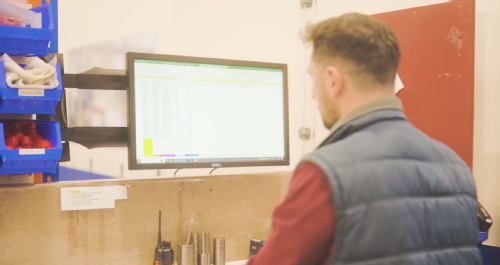
Impacts
- The new system will help Goodflex increase the speed of response to their customers
- The new system will help Goodlfex double their revenue to £10m in three years, with the potential to reach £15-20m in five years, whilst maintaining margins and investment
- The system will lead to a 20-30% efficiency improvement from the automation of business processes
- The company expect to see a 15-20% improvement in material supply and stock efficiencies
- Efficiencies gained through the system will lead to higher levels of profitability
- The new system provides better management information with the ability to set KPIs and have greater operational insight in order to make data driven business decisions
- The new system will also improve Goodflex’s business development strategy enabled by greater insight into costs and opportunities
- The new system has improved workplace motivation and will help to retain and develop highly skilled staff
Armac Martin reignite sustainability drive with second collaborative project
“Working with WMG again has been really beneficial for us. This project will enable us to lower our carbon emissions, something critical for us from both a CSR perspective and in combating rising energy costs to remain competitive.”
Steven West, Head of Operations, Armac Martin Ltd
Background
In 2021, following the introduction of the UK Government’s Net Zero strategy, luxury brass hardware manufacturer, Armac Martin was one of the first companies to join WMG’s Net Zero Innovation (NZIN) Progamme. They collaborated with us to implement sustainable packaging for key product lines in their business. After exploring recyclable, compostable, and returnable options, a cost effective and biodegradable paper-based material was selected which reduced packing time significantly, leading to productivity gains in the business.
Challenge
With renewed drive to reduce emissions by 50% by 2025 and reach Net Zero by 2041, Armac Martin wanted to work with WMG again to see where they could best focus their attentions to achieve these goals. They joined the NZIN programme on a second cohort alongside Brandauer, Sarginsons, Modpods and McGeoch.
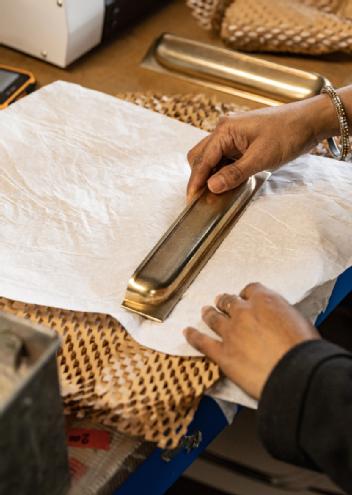
Solution
WMG examined how the company could reduce emissions across Scope 1,2 and 3[i] in the business, through a Greenhouse Gas Accounting project. We highlighted a range of opportunities for them to take onboard as part of a five-year roadmap for sustainable change aligned with business visions and priorities through a NZIN roadmap. Representatives from the company also participated in several workshops hosted by WMG.
Impacts
· The company now have a clear vision of how they are going to reach their 2025 and 2041 targets with an action plan to reduce energy costs in the business, including using data to optimise energy usage, as well as voltage optimisation, insulation, and variable speed drives of machinery,
· They plan to install Solar PV Panels to reduce energy related emissions and susceptibility to grid price fluctuations
· They have the opportunity to access grant funding to install the Solar Panels of up to £100,000,
· They now have a robust sustainability strategy which they communicate to both internal and external stakeholders.
“Armac Martin are a company committed to sustainability and it was great to work with them on a second project looking at energy usage in the business. They are a shining example of how businesses can work towards Net Zero targets while adding value to their clients’ customer experience.”
Archit Tamboli, Technology Transfer Engineer, WMG, University of Warwick
For more info on Armac Martin’s sustainability strategy visit:
https://www.armacmartin.co.uk/
[i] *Scope 1 emissions are the Green House Gas (GHG) emissions that a company makes directly — for example while running its boilers and vehicles.
Scope 2 emissions are the emissions it makes indirectly – like the electricity or energy it buys for heating and cooling buildings, which is being produced on its behalf.
Scope 3 emissions are all the emissions associated, not with the company itself, but those that the organisation is indirectly responsible for, up and down its value chain. For example, from buying products from its suppliers, and from its products when customers use them.
WMG supports Goodfish on its sustainability journey
Goodfish Group have benefited from WMG’s Net Zero Innovation Network with a tailored project focused on helping them achieve their Net Zero goals.
Background
Goodfish Group is the UK’s leading privately-owned contract manufacturer of plastic and composite components. Its expertise in injection-moulding, extrusion, vacuum-forming, and tooling has been developed through successive acquisitions of leading companies in each discipline.
The group has partnered with WMG at the University of Warwick over the last ten years to work on new product and process development and most recently were one of the first companies to benefit from a new Net Zero Innovation Network which was set up to support SME manufacturers achieve their Net Zero goals.
Challenge
Goodfish were keen to map their current waste streams to identify opportunities where they could reduce emissions and increase their environmental, financial, and social sustainability. They recognised that the St Asaph site was the least mature in terms of sustainability, therefore asked the WMG team to focus on this site initially.
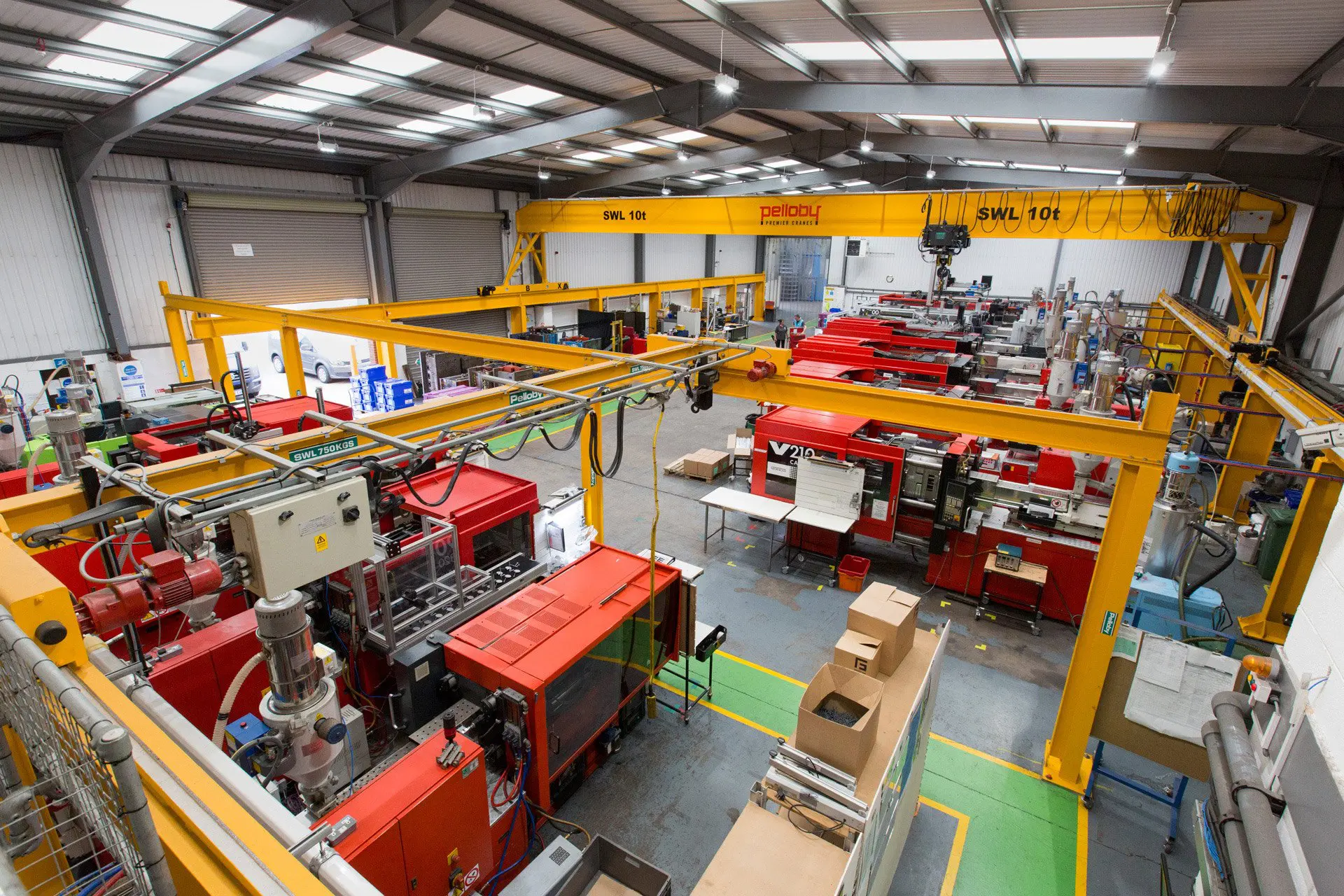
Solution
WMG undertook a Factory walk at St Asaph to identify the waste streams on site in terms of internal waste generation (extrusion and injection moulding) as well as external. They examined waste across Scope 1, 2 and 3 emissions*. Recommendations were then made via the 5R model which helps companies see where they can reduce waste, recycle, reuse, recover or ultimately refuse or prevent the waste happening in the first place.
Goodfish were advised to start making cultural changes within the organisation to encourage better monitoring of wasteful practices and to understand which machines were most energy intensive. WMG suggested using reusable packaging, finding more local recycling facilities, and reusing waste material for new products. They also suggested implementing thermal insulation jackets on injection moulding machines which on a 500T clamp force machine for example could offer a 13% energy saving over a 13-hour shift.
Impact
- Since joining the WMG cohort, Goodfish have taken significant strides forward with their waste reduction activities.
- They have invested approximately £70k in monitoring equipment to enable visibility of energy usage of all machinery across all three sites. With such granularity, they can make changes and updates to machines for optimal energy usage.
- They implemented the insulation jackets on 70 injection moulding machines which has saved 20% on monthly energy consumption
- They are now able to attribute the carbon footprint or CO2 equivalent for each product/part made, which has boosted their sustainability credentials with their clients
- They are now implementing total preventative maintenance and staff training programmes across the group to make even more savings
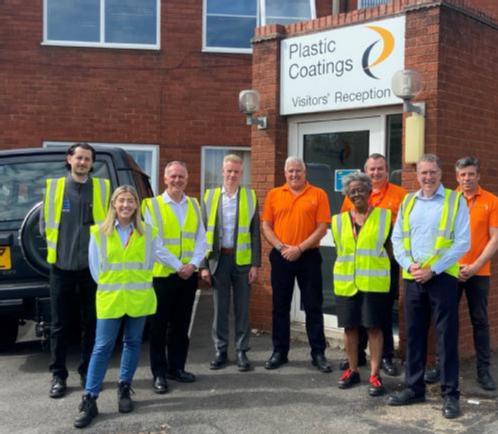
Guy McDonald, Director and Business Transformation Manager at Goodfish said:
“The NZIN programme was useful to meet other business leaders on similar journeys and to understand the Net Zero requirements from an OEM’s perspective, in this case Polestar.
At Goodfish, data is the bedrock of all that do we in terms of energy efficiency. We pretty much know where all the energy hotspots are in the business now and can therefore make targeted changes to boost our Net Zero credentials going forward.”
WMG’s Net Zero Approach
WMG’s Net Zero Innovation programme brings businesses together to gain knowledge about sustainable manufacturing processes, implement change and grow. As well as offering events, workshops, and a best practice visit to a company already implementing sustainable approaches, participating companies also benefit from a tailored project, Net Zero assessment and roadmap report.
For more information about joining a cohort email: wmgsme@warwick.ac.uk
*Scope 1 emissions are the Green House Gas (GHG) emissions that a company makes directly — for example while running its boilers and vehicles.
Scope 2 emissions are the emissions it makes indirectly – like the electricity or energy it buys for heating and cooling buildings, which is being produced on its behalf.
Scope 3 emissions are all the emissions associated, not with the company itself, but those that the organisation is indirectly responsible for, up and down its value chain. For example, from buying products from its suppliers, and from its products when customers use them.
MyWorkwear - Looking good for the future
“In the last couple of months, we have almost doubled our output compared to 18-24 months ago and we can all see the benefits of the new system compared to our old processes. Our turnaround time has been reduced significantly and there are fewer mistakes to be corrected which is another bonus.”
Ben Simpson, Co-Managing Director, MyWorkwearLink opens in a new window
Challenge
Under the leadership of Managing Directors Ben Simpson and James Worthington, MyWorkwearLink opens in a new window, which was started in 1976, produces thousands of garments every week for companies large and small across the UK. Using state-of-the-art embroidery and print machines, the company adds logos, names and designs onto uniforms, workwear, teamwear, promotional items and other garments. The business also supplies PPE and non-personalised clothing from its 6,500 sq ft premises to its customers predominantly in the Midlands and nationwide.
MyWorkwear was growing rapidly and needed its internal systems to reflect the upsurge in orders.
Ben Simpson, Co-Managing Director, said: “Our systems were starting to struggle because we still had processes in place from a long time ago.”
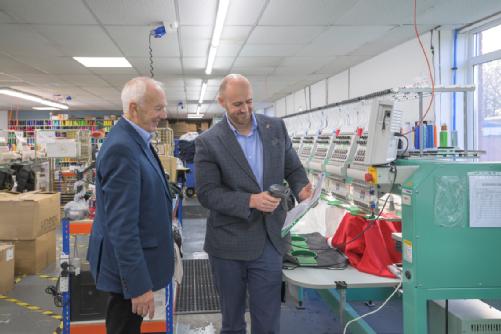
Solution
Working with partners at Made Smarter West Midlands, colleagues at WMG undertook a digital roadmap which led MyWorkwear to buy a specialist ERP system and software that involves the embroidery machines – which embroider many garments simultaneously – ‘talking’ to a central piece of software. It also enables staff to complete the colourisation and bar code scanning on the garments.
“The comprehensive digital roadmap that we carried out for the business highlighted areas which we felt would improve their productivity. We are delighted to have played a part in improving the digitalisation of MyWorkwear which is already leading to efficiencies, and they are a great example for other West Midlands businesses to follow.”
Onur Eren, Chief Engineer, WMGLink opens in a new window
Impact
Read more here about the project and the results here.Link opens in a new window
For more information about working with WMG's SME Group email wmgsme@warwick.ac.uk

Brandauer reduces its packaging emissions by 60% on its journey to Net Zero
“We were extremely happy with the work that was undertaken with Archit and the team at WMG, which opened our eyes to ways of reducing our carbon footprint in a cost-effective way. This has allowed us to further develop our front-end processes to change the way jobs are quoted, putting more emphasis on the impact process materials have on the environment.”
Adam Burgoyne, Operations Lead, Brandauer Ltd
Getting started on the pathway to Net Zero
There are many ways for a business to get onboard with the Net Zero mission. However, knowing where to start can be tricky. Precision stamping and tooling firm Brandauer Link opens in a new windowwere keen to understand how they could reduce emissions in their day-to-day activity but needed guidance. Through their existing partnership activity with WMG they heard about the Net Zero Innovation Network.
The Net Zero Innovation Network (NZIN) is a WMG initiative that brings together groups of SMEs with a larger manufacturing organisation and a member of the WMG SME group to work on Net Zero challenges. Brandauer were part of a cohort with other Midlands manufacturers Goodfish Group, Plastic Coatings Ltd, and Alucast Ltd. Swedish electric car manufacturer Polestar joined up to give the large business perspective in terms of their Net Zero mission and supply chain objectives.
After a series of collaborative workshops with expert speakers and a Net Zero Readiness Assessment to benchmark their current Net Zero position across the business, Brandauer decided that an area to target with a specific project was packaging.
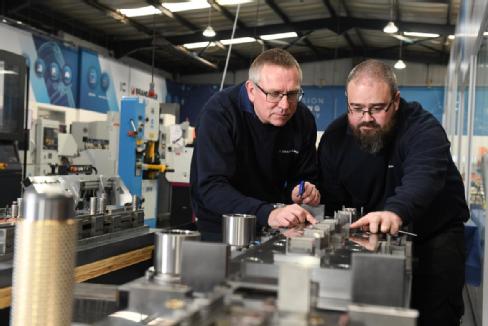
Step 1: Identify emissions associated with packaging in the business
The Department for Environment, Food and Rural Affairs (Defra) have recently published guidance to encourage more responsible behaviour when it comes to packaging goods, and they have a database that can support manufacturers to work out their packaging emissions.
Brandauer were concerned by the amount of single-use packaging materials they were using for clients. They wanted to get a better understanding of the carbon footprint and costs of their packaging materials. Furthermore, they wanted to know where their emission hotspots were, and how they could tackle them.
With agreement from Brandauer, WMG's Archit TamboliLink opens in a new window mapped the packaging system for a major overseas client that was most typical of packaging systems across the business. It involved identifying the individual components and inventory that made up a packaging system and calculating the greenhouse gas emissions in terms of the CO2 equivalent (CO2e*) in kilograms per pallet. With this information Archit was then able to calculate this figure on an annual basis.
Step 2: Investigate and implement reusable packaging
To minimise the environmental impact of their packaging, Archit suggested that they could use reusable packaging instead of conventional pallets. He identified a range of suppliers in the Birmingham area and outlined the options, grades of materials and prices. The calculations revealed that Brandauer’s packaging emissions across the company could be reduced by 61% (equivalent to 9.5 tonnes of CO2) and costs by 15% by using reusable pallets.
As a result of Archit’s work, Brandauer have now incorporated the option for selecting reusable packaging in the quotation phase for customers. This has led to three new client jobs that exclusively use re-useable packaging in trays. It is likely that more clients will choose this option in the future leading to a reduction in costs and environmental impact.
Step 3: Refurbish your own old packaging to reduce emissions further.
Since the project has been completed, Brandauer are refurbishing nearly all the pallets they use internally with timber they store and are looking to roll this option out to customers. This option has the potential to save even more costs and emissions.
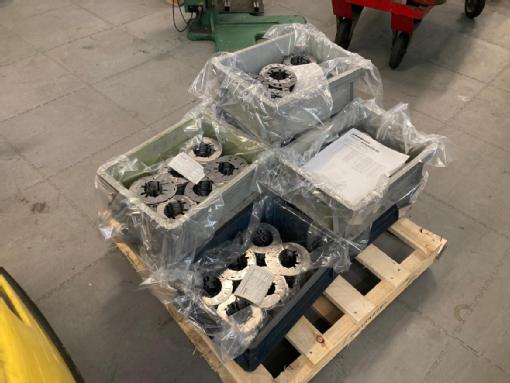
“The work we have done with Brandauer on their NET Zero journey so far has highlighted how small changes in the business can make a significant impact on the reduction of emissions and costs. As reusable packaging rolls out to more Brandauer clients, there is an opportunity to make an even bigger environmental impact.”
Archit Tamboli, Technology Transfer Engineer, WMG
*CO2e is a metric measure that is used to compare emissions from various greenhouse gases based on their GWP (global warming potential) by converting amounts of other gases to the equivalent amount of CO2.
For more information on working with WMG, please email wmgsme at warwick dot ac dot uk


Waste recovery project identifies new opportunities and savings
Challenge
JCM Contracts Link opens in a new windoware a commercial joinery company based in Halesowen. A large part of their business is the manufacture of washroom cubicles which are made from a decorative compact laminate material. They were generating one tonne of offcuts of this material per month, and it was difficult to recycle. The company had become more active in their mission to decarbonise the business and wanted to calculate their CO2 output and identify innovative measures to reduce it.
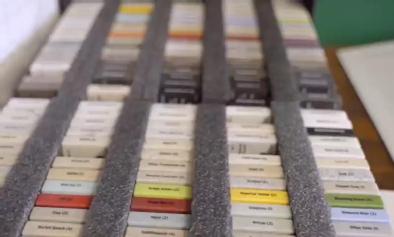
Solution
JCM were introduced to Helena Simmonds, Net Zero specialist at WMG, and they joined the Net Zero Innovation NetworkLink opens in a new window - a group of SMEs all interested in reducing carbon emissions. Helena scoped a project to assess alternatives to landfill for the laminate off-cut to reduce both the environmental and the financial impact. She undertook an environmental and cost assessment and was able to determine that the offcuts generated 366,481kg of CO2 equivalent emissions, costing JCM £7,200 per annum to dispose of them. Using the ‘5 Rs’ sustainability hierarch, she then went onto explore alternatives for the waste offcuts for each level of the waste hierarchy.
This included the identification of a waste management company that can recover energy from the waste to create electricity, recycling the offcuts and using them to development new products, such as filler for injection moulding plastics as well as garden furniture, flooring or polymer gears. To significantly reduce the amount of material used when manufacturing the washroom cubicles, it was proposed that JCM use a “nesting” software which takes 2D drawings of the pieces to be cut from the sheet and fits them to maximise utilisation.
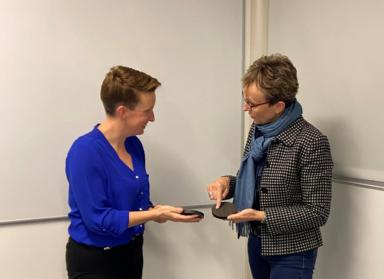
Impact
- New product opportunities are now being explored which could generate a new revenue stream for JCM, further research will prove feasibility
- The nesting software is to be installed and could reduce usage of the material by 5% and speed up the cutting process by 15%
- The project led to additional collaborative work and a grant of £20,000 to implement a collaborative robot to carry out the sanding process in the business. It is already exceeding its targets, saving time, and creating efficiencies


